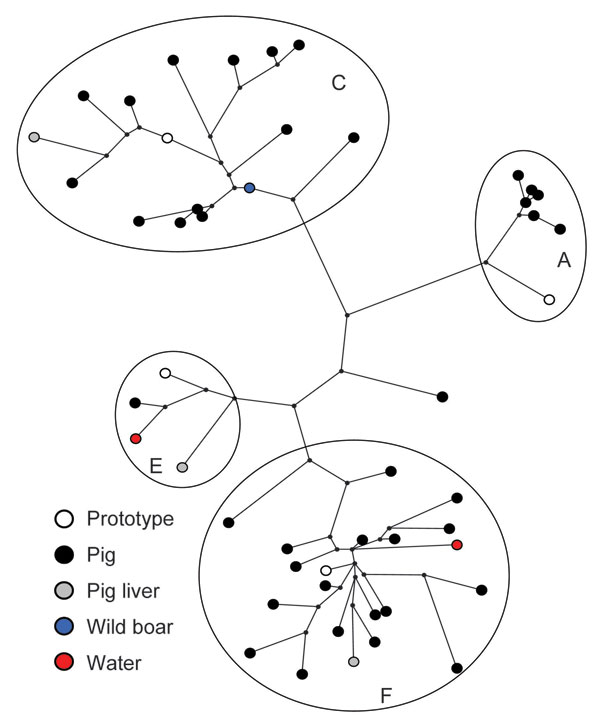Volume 15, Number 3—March 2009
Research
Sources of Hepatitis E Virus Genotype 3 in the Netherlands
Figure 1

Figure 1. Maximum-parsimony tree of hepatitis E virus (HEV) sequences detected in pig, wild boar and water samples, based on a 148-nt sequence of open reading frame 2 (nt 6322–6469 of strain M73218). Sources of Dutch sequences and genotype 3 clusters are indicated. Sequences are compared with prototype sequences of different clusters of HEV genotype 3. Prototypes correspond with the following GenBank accession nos.: A) US1, AF060668; C) NLSW105, AF336298; E) UK-swine p354, AF503511; F) G1, AF110391. The following accession numbers have been used for phylogenetic analysis of isolates from surface water: EU526620, EU526626, from wild boar; EU526642, from pig liver; DQ916142–DQ916144, from pig feces; and DQ996399, EU526606–EU526619, EU526621–EU526625, EU526627–EU526641, EU526643–EU526647.